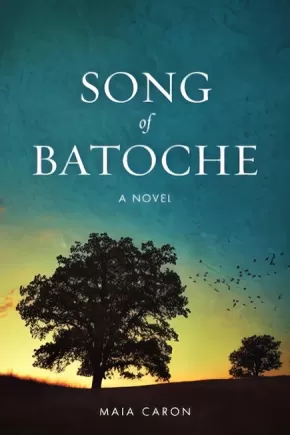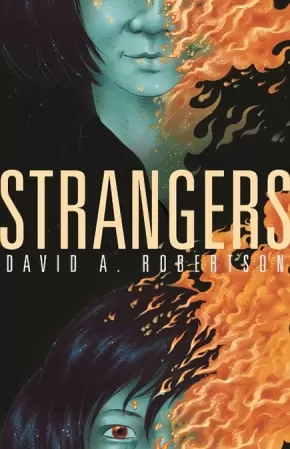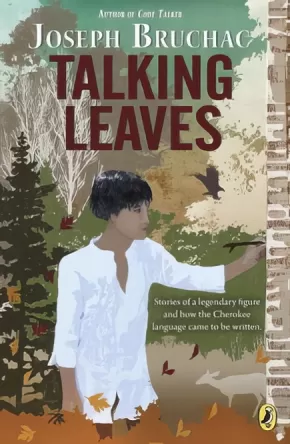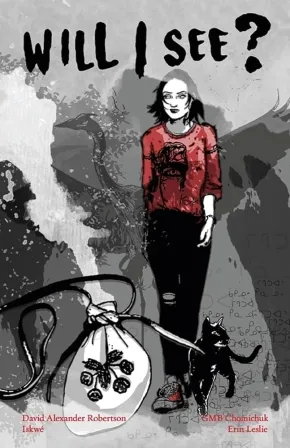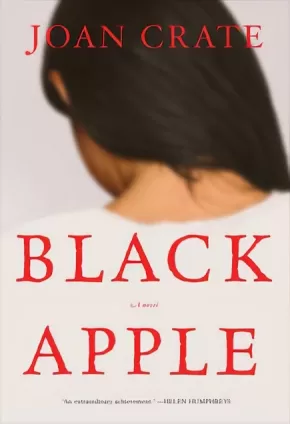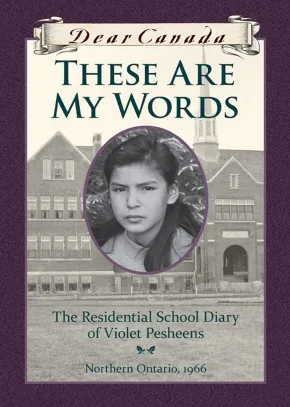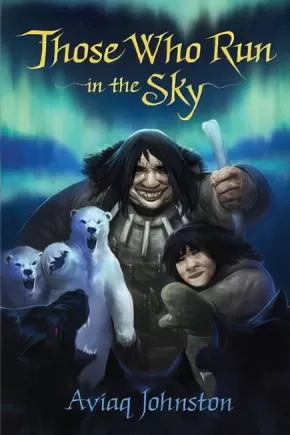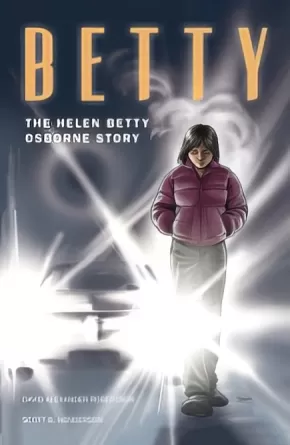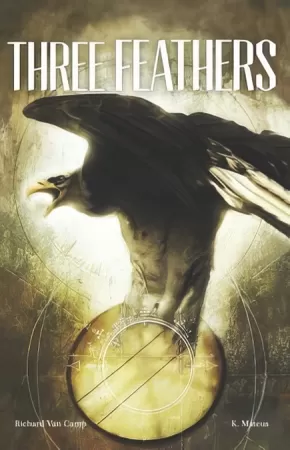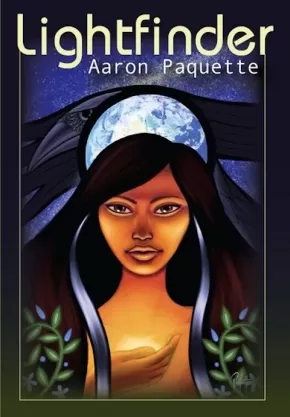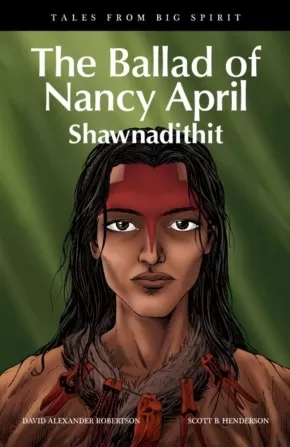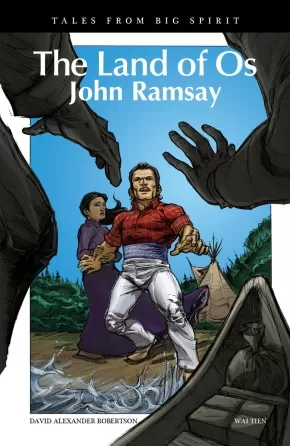
Indigenous ERAC Approved Titles
16
-
30
of
56 Results;
Sort By
Go To
of 4
ERAC is a member-based organization providing services to the K12 education sector in B.C. and the Yukon. Membership is voluntary and includes BC public school districts, Yukon Education, and BC independent schools.
Song of Batoche
$22.95
Format:
Paperback
Text Content Territories:
Indigenous Canadian; Métis;
ISBN / Barcode: 9781553804994
Synopsis:
Synopsis:
Louis Riel arrives at Batoche in 1884 to help the Métis fight for their lands and discovers that the rebellious outsider Josette Lavoie is a granddaughter of the famous chief Big Bear, whom he needs as an ally. But Josette learns of Riel's hidden agenda - to establish a separate state with his new church at its head - and refuses to help him. Only when the great Gabriel Dumont promises her that he will not let Riel fail does she agree to join the cause. In this raw wilderness on the brink of change, the lives of seven unforgettable characters converge, each one with secrets: Louis Riel and his tortured wife Marguerite; a duplicitous Catholic priest; Gabriel Dumont and his dying wife Madeleine; a Hudson's Bay Company spy; and the enigmatic Josette Lavoie. As the Dominion Army marches on Batoche, Josette and Gabriel must manage Riel's escalating religious fanaticism and a growing attraction to each other. Song of Batoche is a timeless story that traces the borderlines of faith and reason, obsession and madness, betrayal and love.
Awards
2015 Governor General's Award for French-to-English Translation winner
Reviews
"This passionate retelling uses women's eyes to reveal the hidden history behind Riel and Gabriel Dumont. Deeply researched, and rooted in the soil of Batoche." - Marina Endicott, author of the Giller-nominated Close to Hugh
"Combining fine research and engaging storytelling, Song of Batoche is a stirring fictionalized account of events in and around the 1885 North-West Resistance. Josette Lavoie is an intriguing and memorable heroine." - Katherena Vermette, author of the The Break and winner of the Governor General's Award
"Caron weaves a tale of love, betrayal and obsession . . . a vivid and fast-paced retelling of this moment in Canadian history." - Toronto Star
"A fascinating and beautifully written account of Louis Riel and the months preceding the Battle of Batoche, as seen through the eyes of the Métis women. This is a perspective we've not seen before, and Caron handles it with compassion and depth." Lauren B. Davis, author of the Giller-nominated Our Daily Bread
Additional Information
372 pages | 6.00" x 9.00"
Strangers: Book 1 of the Reckoner Trilogy
$20.95
Format:
Paperback
Text Content Territories:
Indigenous Canadian;
ISBN / Barcode: 9781553796763
Synopsis:
Synopsis:
When Cole Harper is compelled to return to Wounded Sky First Nation, he finds his community in chaos: a series of shocking murders, a mysterious illness ravaging the residents, and reemerging questions about Cole’s role in the tragedy that drove him away 10 years ago. With the aid of an unhelpful spirit, a disfigured ghost, and his two oldest friends, Cole tries to figure out his purpose, and unravel the mysteries he left behind a decade ago. Will he find the answers in time to save his community?
Reviews
"Within the very opening pages of Strangers, Cole Harper had already burrowed his way deep into my heart. I raced through the chapters, fearing for this young hero, his friends, and his wider community. David Robertson has written a riveting story of a young man burdened with adult responsibilities. Robertson’s true skill, though, comes in the way he balances the intense peril with humour and magic and love and resilience. Teachers, get this novel into your classrooms. I want everyone to read Strangers." — Angie Abdou, author of In Case I Go
"Strangers has it all - vivid and imaginatively crafted characters, a propulsive and energetic plot, brilliant dialogue, and a series of mysteries that make us think in a new way about the world we inhabit. The story skillfully unfolds, and the characters - the spirit beings and the human ones - are utterly convincing. This book is a page-turner and lingers in the memory. Strangers will resonate with and enthrall everyone, both Indigenous and non-Indigenous readers." —Warren Cariou, Canada Research Chair and Director, Centre for Creative Writing and Oral Culture, University of Manitoba
Educator & Series Information
Strangers is the first novel in The Reckoner trilogy, followed by Monsters and then Ghosts.
The Reckoner series is recommended for ages 12 to 18.
The Canadian Indigenous Books for Schools list recommends this resource for Grades 9-12 English Language Arts.
This book is available in French: La trilogie Reckoner - Tome 1: Étrangers
Additional Information
233 pages | 5.50" x 8.50"
Talking Leaves
$11.99
Format:
Paperback
Text Content Territories:
Indigenous American; Native American; Cherokee;
ISBN / Barcode: 9780142422984
Synopsis:
Synopsis:
A work of historical fiction about Sequoyah and the creation of the Cherokee alphabet, from the acclaimed author of Code Talker
Thirteen-year-old Uwohali has not seen his father, Sequoyah, for many years. So when Sequoyah returns to the village, Uwohali is eager to reconnect. But Sequoyah’s new obsession with making strange markings causes friends and neighbors in their tribe to wonder whether he is crazy, or worse—practicing witchcraft. What they don’t know, and what Uwohali discovers, is that Sequoyah is a genius and his strange markings are actually an alphabet representing the sounds of the Cherokee language.
The story of one of the most important figures in Native American history is brought to life for middle grade readers. This text includes a note about the historical Sequoyah, the Cherokee syllabary, a glossary of Cherokee words, and suggestions for further reading in the back matter.
Reviews
* “Bruchac has crafted a tale of depth and universal humanity in this fictionalized account of Sequoyah, the creator of the Cherokee syllabary, and his son, Jesse." —School Library Journal, starred review
“Although the particulars of the novel occur two hundred years ago, the universality of fitting into a blended family and looking for love and acceptance from a once-absent father feel strikingly contemporary." —Horn Book
"A vivid retelling of a pivotal time for the Cherokee nation.” —Kirkus Reviews
Additional Information
288 pages | 5.19" x 7.81"
The Marrow Thieves
$19.95
Format:
Paperback
Text Content Territories:
Indigenous Canadian; Métis;
ISBN / Barcode: 9781770864863
Synopsis:
Synopsis:
Humanity has nearly destroyed its world through global warming, but now an even greater evil lurks. The indigenous people of North America are being hunted and harvested for their bone marrow, which carries the key to recovering something the rest of the population has lost: the ability to dream. In this dark world, Frenchie and his companions struggle to survive as they make their way up north to the old lands. For now, survival means staying hidden - but what they don't know is that one of them holds the secret to defeating the marrow thieves.
Awards
- Winner of 2017 Governor General's Literary Award
- Winner of 2017 Kirkus Prize
- Winner of the 2018 Burt Literary Award for First Nations, Inuit, and Métis Young Adult Literature.
Reviews
“Miigwans is a true hero; in him Dimaline creates a character of tremendous emotional depth and tenderness, connecting readers with the complexity and compassion of Indigenous people. A dystopian world that is all too real and that has much to say about our own.”— Kirkus Reviews
"There's a quality in Dimaline's writing that reached from the page, into my being ... That's a specific reference to the residential schools of the past, where so much was taken from Native children. It is one of many points in The Marrow Thieves where - painfully or with exquisite beauty - Dimaline's story resonates with me. It will resonate with other Native readers, too, especially those who are Anishinabe. Several tribal nations are mentioned in here, too ... There's so much more to say ... about Miggs and Isaac, about Ri, about Minerva, about French. But I'll stop and let you be with these achingly dear characters. I highly recommend The Marrow Thieves." — Debbie Reese, American Indians in Children's Literature
"In The Marrow Thieves, Cherie Dimaline creates a near-future world which distinctly echoes our own, current and past traumas that have come back to repeat themselves, fiction with a basis in reality that gives the narrative a sheen of hard truths, following the trials and tribulations of a relatable cast of characters and their struggles to survive, and live their lives with the love and safety denied to them. The high-stakes tension of each scene pulls the reader along through the story, with a core message about our dreams and culture, which despite losses, has the potential to heal, and the power to restore." — Trillium Book Award Jury Citation, June 2018
"[The Marrow Thieves] brilliantly connects the legacy of residential schools to a dystopian post-climate-change future where only Indigenous people are able to dream. Dimaline’s novel reminds us of the power of storytelling and the importance of community, reinforced for the disenfranchised children by the wisdom of the heroic elder, Miigwans. The writing is painful yet beautiful, bleak but ultimately hopeful. In this era of reconciliation, Cherie Dimaline’s The Marrow Thieves is a work of speculative fiction that resonates and stays with the reader long past the last page." — Sunburst Award Jury Citation, October 2018
Educator & Series Information
Recommended Ages: 13+
Recommended English First Peoples resource for grades 11-12.
This book is part of the Marrow Thieves series.
The Canadian Indigenous Books for Schools list recommends this resource for Grades 9-12 English Language Arts.
Caution: This book touches on physical and sexual violence.
DCB Young Readers has created a Teacher's Guide for this resource, which can be downloaded here: Teachers Guide - The Marrow Thieves
This resource is also available in French: Pilleurs de rêves
Additional Information
180 pages | 5.00" x 8.00"
Will I See?
$19.95
Artists:
Format:
Paperback
Text Content Territories:
Indigenous Canadian;
ISBN / Barcode: 9781553796749
Synopsis:
Synopsis:
May, a young teenage girl, traverses the city streets, finding keepsakes in different places along her journey. When May and her kookum make these keepsakes into a necklace, it opens a world of danger and fantasy. While May fights against a terrible reality, she learns that there is strength in the spirit of those that have passed. But will that strength be able to save her? A story of tragedy and beauty, Will I See illuminates the issue of missing and murdered Indigenous women.
Additional Information
54 pages | 6.50" x 10.00"
Black Apple (PB)
$19.99
Format:
Paperback
Text Content Territories:
Indigenous Canadian; First Nations; Blackfoot Confederacy (Siksikaitsitapi);
ISBN / Barcode: 9781476795171
Synopsis:
Synopsis:
A dramatic and lyrical coming-of-age novel about a young Blackfoot girl who grows up in the residential school system on the Canadian prairies.
Torn from her home and delivered to St. Mark’s Residential School for Girls by government decree, young Rose Marie finds herself in an alien universe where nothing of her previous life is tolerated, not even her Blackfoot name. For she has entered into the world of the Sisters of Brotherly Love, an order of nuns dedicated to saving the Indigenous children from damnation. Life under the sharp eye of Mother Grace, the Mother General, becomes an endless series of torments, from daily recitations and obligations to chronic sickness and inedible food. And then there are the beatings. All the feisty Rose Marie wants to do is escape from St. Mark’s. How her imagination soars as she dreams about her lost family on the Reserve, finding in her visions a healing spirit that touches her heart. But all too soon she starts to see other shapes in her dreams as well, shapes that warn her of unspoken dangers and mysteries that threaten to engulf her. And she has seen the rows of plain wooden crosses behind the school, reminding her that many students have never left here alive.
Set during the Second World War and the 1950s, Black Apple is an unforgettable, vividly rendered novel about two very different women whose worlds collide: an irrepressible young Blackfoot girl whose spirit cannot be destroyed, and an aging yet powerful nun who increasingly doubts the value of her life. It captures brilliantly the strange mix of cruelty and compassion in the residential schools, where young children are forbidden to speak their own languages and given Christian names. As Rose Marie matures, she finds increasingly that she knows only the life of the nuns, with its piety, hard work and self-denial. Why is it, then, that she is haunted by secret visions—of past crimes in the school that terrify her, of her dead mother, of the Indigenous life on the plains that has long vanished? Even the kind-hearted Sister Cilla is unable to calm her fears. And then, there is a miracle, or so Mother Grace says. Now Rose is thrust back into the outside world with only her wits to save her.
With a poet’s eye, Joan Crate creates brilliantly the many shadings of this heartbreaking novel, rendering perfectly the inner voices of Rose Marie and Mother Grace, and exploring the larger themes of belief and belonging, of faith and forgiveness.
Dear Canada: These Are My Words: The Residential School Diary of Violet Pesheens
$16.99
Format:
Hardcover
Text Content Territories:
Indigenous Canadian; First Nations; Anishinaabeg;
ISBN / Barcode: 9781443133180
Synopsis:
Synopsis:
Acclaimed author Ruby Slipperjack delivers a haunting novel about a 12-year-old girl's experience at a residential school in 1966.
Violet Pesheens is struggling to adjust to her new life at residential school. She misses her Grandma; she has run-ins with Cree girls; at her "white" school, everyone just stares; and everything she brought has been taken from her, including her name-she is now just a number. But worst of all, she has a fear. A fear of forgetting the things she treasures most: her Anishnabe language; the names of those she knew before; and her traditional customs. A fear of forgetting who she was.
Her notebook is the one place she can record all of her worries, and heartbreaks, and memories. And maybe, just maybe there will be hope at the end of the tunnel.
Drawing from her own experiences at residential school, Ruby Slipperjack creates a brave, yet heartbreaking heroine in Violet, and lets young readers glimpse into an all-too important chapter in our nation's history.
Educator Information
Find the French translation of this resource here: Cher journal: Les mots qu'il me reste
Additional Information
192 pages | 5.54" x 7.66"
The Break
$23.99
Format:
Paperback
Text Content Territories:
Indigenous Canadian; Métis;
ISBN / Barcode: 9781487001117
Synopsis:
Synopsis:
When Stella, a young Métis mother, looks out her window one evening and spots someone in trouble on the Break — a barren field on an isolated strip of land outside her house — she calls the police to alert them to a possible crime.
In a series of shifting narratives, people who are connected, both directly and indirectly, with the victim — police, family, and friends — tell their personal stories leading up to that fateful night. Lou, a social worker, grapples with the departure of her live-in boyfriend. Cheryl, an artist, mourns the premature death of her sister Rain. Paulina, a single mother, struggles to trust her new partner. Phoenix, a homeless teenager, is released from a youth detention centre. Officer Scott, a Métis policeman, feels caught between two worlds as he patrols the city. Through their various perspectives a larger, more comprehensive story about lives of the residents in Winnipeg’s North End is exposed.
A powerful intergenerational family saga, The Break showcases Vermette’s abundant writing talent and positions her as an exciting new voice in Canadian literature.
Awards
- 2017 Burt Award for First Nations, Inuit, and Métis Literature Winner
- Margaret Laurence Award for Fiction Winner
- McNally Robison Book of the Year Winner
- Amazon.ca First Novel Award
Reviews
“Vermette is a staggering talent. Reading The Break is like a revelation; stunning, heartbreaking and glorious. From her exquisitely rendered characters to her fully realized world and the ratcheting tension, I couldn’t put it down. Absolutely riveting.” — Eden Robinson, author of Monkey Beach
“In Vermette’s poetic prose, The Break offers a stark portrayal of the adversity that plagues First Nations women in this country — and the strength that helps them survive.” — Toronto Star
“The Break doesn’t read like an impressive first novel; it reads like a masterstroke from someone who knows what they’re doing . . . Vermette is skilled at writing with a language that is conversational and comfortable and with a poetic ease that makes the hard things easier to swallow. The result is a book that is at times emotionally demanding, funny, suspenseful, and always engaging.”—The Winnipeg Review
“This is a debut novel by the Governor General's Literary Award-winning Métis poet Katherena Vermette. The story takes place in Winnipeg's North End. And it starts when Stella thinks she sees a violent assault taking place in a barren strip of land outside her window, known as The Break. Turns out, she is right. In fact, there is a threat of violence that hovers over all the women in the story, three generations of them, and the story is told in many voices. Katherena writes with empathy and understanding about people who are living with the pain of intergenerational trauma. The Winnipeg winter she evokes is cold and cruel. But there is such love, loyalty and support in this story. If you enjoy a gripping family saga, I would recommend The Break.” — Shelagh Rogers, CBC The Next Chapter
Educator Information
Grades 11-12 BC English First Peoples resource for the unit What Creates Family?
The Canadian Indigenous Books for School list recommends this resource for Grades 10-12 English Language Arts.
Curriculum Connections: English, Indigenous Studies, Anthropology
Note: This novel contains mature and challenging content, such as incidents of drug use, rape, and, violence.
Additional Information
288 pages | 5.25" x 8.00"
Those Who Run in the Sky
$15.95
Artists:
Format:
Paperback
Text Content Territories:
Indigenous Canadian; Inuit;
ISBN / Barcode: 9781772271218
Synopsis:
Synopsis:
This teen novel, written by Iqaluit-based Inuit author Aviaq Johnston, is a coming-of-age story that follows a young shaman named Pitu as he learns to use his powers and ultimately finds himself lost in the world of the spirits. After a strange and violent blizzard leaves Pitu stranded on the sea ice, without his dog team or any weapons to defend himself, he soon realizes that he is no longer in the world that he once knew. The storm has carried him into the world of the spirits, a world populated with terrifying creatures---black wolves with red eyes, ravenous and constantly stalking him; water-dwelling creatures that want nothing more than to snatch him and pull him into the frigid ocean through an ice crack. As well as beings less frightening, but equally as incredible, such as a lone giant who can carry Pitu in the palm of her hand and keeps caribou and polar bears as pets. After stumbling upon a fellow shaman who has been trapped in the spirit world for many years, Pitu must master all of his shamanic powers to make his way back to the world of the living, to his family, and to the girl that he loves.
Award
- 2018 Winner of Indigenous Voices Award for Most Significant Work of Prose in English by an Emerging Indigenous Writer
Educator Information
Recommended in the Canadian Indigenous Books for Schools 2019-2020 resource list for grades 7 to 10 for English Language Arts.
Additional Information
208 pages | 6.00" x 9.00"
Betty: The Helen Betty Osborne Story
$16.00
Artists:
Format:
Paperback
Text Content Territories:
Indigenous Canadian; First Nations; Cree (Nehiyawak);
ISBN / Barcode: 9781553795445
Synopsis:
Synopsis:
Helen Betty Osborne, known as Betty to her closest friends and family, dreamed of becoming a teacher. She left her home to attend residential school and high school in a small town in Manitoba. On November 13, 1971, Betty was abducted and brutally murdered by four young men. Initially met with silence and indifference, her tragic murder resonates loudly today. Betty represents one of almost 1,200 Indigenous women in Canada who have been murdered or gone missing.
This book is a true account. Content may be disturbing to some readers.
Educator Information
Recommended for ages 12 to 18.
Additional Information
30 pages | 6.50" x 10.00"
The Outside Circle: A Graphic Novel
$21.99
Artists:
Format:
Paperback
Text Content Territories:
Indigenous Canadian;
ISBN / Barcode: 9781770899377
Synopsis:
Synopsis:
In this important graphic novel, two Aboriginal brothers surrounded by poverty, drug abuse, and gang violence, try to overcome centuries of historic trauma in very different ways to bring about positive change in their lives.
Pete, a young Aboriginal man wrapped up in gang violence, lives with his younger brother, Joey, and his mother who is a heroin addict. One night, Pete and his mother’s boyfriend, Dennis, get into a big fight, which sends Dennis to the morgue and Pete to jail. Initially, Pete keeps up ties to his crew, until a jail brawl forces him to realize the negative influence he has become on Joey, which encourages him to begin a process of rehabilitation that includes traditional Aboriginal healing circles and ceremonies.
Powerful, courageous, and deeply moving, The Outside Circle is drawn from the author’s twenty years of work and research on healing and reconciliation of gang-affiliated or incarcerated Aboriginal men.
Educator Information
Recommended for ages 16 and up.
Curriculum Connections: Graphic Art, Indigenous Studies, Social Studies.
Additional Information
128 pages | 6.68" x 10.00"
Three Feathers
$18.95
Artists:
Format:
Paperback
Text Content Territories:
Indigenous Canadian;
ISBN / Barcode: 9781553795360
Synopsis:
Synopsis:
Three young men—Flinch, Bryce, and Rupert—have vandalized their community and are sent by its Elders to live nine months on the land as part of the circle sentencing process. There, the young men learn to take responsibility for their actions and acquire the humility required to return home. But, when they do return, will they be forgiven for what they’ve done?
Three Feathers explores the power and grace of restorative justice in one Northern community and the cultural legacy that can empower future generations.
Three Feathers is the third title in The Debwe Series. Created in the spirit of the Anishinaabe concept debwe (to speak the truth), The Debwe Series is a collection of exceptional Aboriginal writings from across Canada.
Reviews
"Three Feathers is a graphic novel illustrated by stark, black and white images. Many of the frames have no captioning, inviting the reader to intuit the narrative. K. Mateus, the illustrator, makes imaginative use of Aboriginal symbols and motifs in this 48 page book; when Gabe is attacked, demonic figures shadow the background, and when Bryce rails at the members of the community sentencing circle, the image of an angry wildcat snarls behind him." - CM Magazine
Educator & Series Information
Grades 10-12 BC English First Peoples Resource for units on Childhood and Place-Conscious Learning.
Recommended for grades 9 to 12.
This book is part of The Debwe Series, which features exceptional Indigenous writings from across Canada.
This book is available in French: Trois Plumes
Additional Information
48 pages | 6.50" x 10.00"
Lightfinder (3 in stock, in reprint)
$22.00
Artists:
Format:
Paperback
Text Content Territories:
Indigenous Canadian; First Nations; Cree (Nehiyawak);
ISBN / Barcode: 9780986874079
Synopsis:
Synopsis:
Lightfinder is a Young Adult fantasy novel about Aisling, a young Cree woman who sets out into the wilderness with her Kokum (grandmother), Aunty and two young men she barely knows.
They have to find and rescue her runaway younger brother, Eric. Along the way she learns that the legends of her people might be real and that she has a growing power of her own. The story follows the paths of Aisling and Eric, siblings unwittingly thrust into a millennia-old struggle for the future of life on earth. It deals with growing up, love and loss, and the choices life puts in our path. Love and confusion are in store, as are loss and pain. Things are not always what they seem and danger surrounds them at every turn. Will Raven's mysterious purposes prevail? With darkness closing in how will they find the light to guide them? Will Aisling find Eric in time?
Set in the Alberta landscape with references to real-world challenges faced by youth today, Lightfinder has proven to be a hit with young adults and adults alike. Lightfinder spent over 60 days in Amazon's Top 100 Sci-Fi and Fantasy novels in 2014.
Awards
- Winner of the 2015 Burt Award for First Nations, Métis and Inuit Literature!
Reviews
"With an artist's eye and a storyteller's soaring imagination, Aaron Paquette has written a page-turner. I found myself rooting hard for Aisling, Eric and their beloved Kokum. This book is a hugely engaging cautionary tale: the stakes are high if we keep giving in to our appetites. But there is great light in Lightfinder. Congratulations, Aaron, on this strong debut." - Shelagh Rogers
Educator Information
Recommended Ages: 11-18
Additional Information
240 pages | 6.00" x 9.00"
The Ballad of Nancy April: Shawnadithit
$17.95
Artists:
Format:
Paperback
Text Content Territories:
Indigenous Canadian; First Nations; Beothuk;
ISBN / Barcode: 9781553794776
Synopsis:
Synopsis:
When a mishap delays Jessie at the end of a school day, she takes a shortcut home. But the shortcut turns into an adventure, as Jessie is transported through time and space, to early 19th-century Newfoundland. There she meets Shawnadithit who, as the last surviving member of the Beothuk, has witnessed the end of a once-great people.
Educator & Series Information
Tales from Big Spirit is a unique graphic novel series that delves into the stories of great Indigenous heroes from Canadian history—some already well known and others who deserve to be. Designed to correspond to grades 4–6 social studies curriculums across Canada, these full colour graphic novels could be used in literature circles, novel studies, and book clubs to facilitate discussion of social studies topics. These books will help students make historical connections while promoting important literacy skills.
Grades 4-6
A Teacher's Guide is also available for the Tales from the Big Spirit Series: Tales from the Big Spirit Series Teacher's Guide
The teacher's guide is designed to help classroom teachers use the graphic novel series, Tales From Big Spirit, by David Alexander Robertson. The guide provides detailed lessons that meet a wide range of language arts and social studies goals, integrate Indigenous perspectives, and make curricular content more accessible to diverse learners.
This resource is also available in French: D'hier à aujourd'hui, L’héritage de Nancy April : Shawnadithit
Additional Information
30 pages | 6.50" x 10.00"
The Land of Os: John Ramsay
$17.95
Artists:
● Wai Tien
Format:
Paperback
Text Content Territories:
Indigenous Canadian; First Nations; Anishinaabeg; Ojibway; Saulteaux;
ISBN / Barcode: 9781553794912
Synopsis:
Synopsis:
When Richard’s class from Big Spirit School takes a canoe trip, he and his classmates chance upon an elderly woman. She tells them the story of her grandfather, John Ramsay, of the Sandy Bar community on Lake Winnipeg. Ramsay’s land was taken by the government and given to the new settlers from Iceland who arrived there in 1875. Yet many owed their survival to Ramsay, who helped them through freezing winters, hunger, and a devastating smallpox epidemic.
Educator & Series Information
The Land of Os is one book in the Tales From Big Spirit series. Tales from Big Spirit is a unique graphic novel series that delves into the stories of great Indigenous heroes from Canadian history—some already well known and others who deserve to be. Designed to correspond to grades 4–6 social studies curriculums across Canada, these full colour graphic novels could be used in literature circles, novel studies, and book clubs to facilitate discussion of social studies topics. These books will help students make historical connections while promoting important literacy skills.
A Teacher's Guide is also available for the Tales from the Big Spirit Series: Tales from the Big Spirit Series Teacher's Guide. The teacher's guide is designed to help classroom teachers use the graphic novel series, Tales From Big Spirit, by David Alexander Robertson. The guide provides detailed lessons that meet a wide range of language arts and social studies goals, integrate Indigenous perspectives, and make curricular content more accessible to diverse learners.
This resources is also available in French: D'hier à aujourd'hui, Le protecteur d’Ós : John Ramsay
Additional Information
30 pages | 6.50" x 10.00"
Sort By
Go To
of 4

